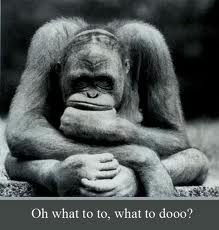How do you turn an idea into reality? More specifically, how do you take an idea, create a business model around it, and bring it to market? The act of business model generation is actually an art. It takes willpower, knowledge, risk, and an undying ability to persevere in order to create a successful new venture. B-school is famous for taking thousands of bright young minds and putting them “through the system”. Renowned professors who are specialists in their fields are recruited to pass their knowledge to their students. However, this specialized knowledge often gives students a very strong foundation into the various silos of business. For example, thanks to my b-school education, I can now probably analyse a balance sheet, approach an HR incentive issues, create a smear marketing campaign, etc. But how exactly do these pieces come together?
Entrepreneurs have the ability to put these pieces together. They can take their vision and insert components of HR, Marketing, Finance, Accounting, etc to create a successful business model. So what does this process entail? Talking to Eesmyal, President of HiVE Vancouver, it was evident that there is no “one-path approach” to business model generation. Of course, Tim Brown had already made it evident that the process of business model generation goes through several (if not hundreds) iterations. The business fundamentals will inevitably change throughout its generation process as more data is collected and more assumptions are created. In the case of HiVE, Eesmyal and his visionary team were faced with several decisions that needed to be made. Who do we target? Can we grow this target market? Should we keep the same target market and try and increase our number of consumers? Or should we attract a completely different target market and grow our consumers by attracting a more diverse group of clients?
The business model worksheet gave us, as students and aspiring entrepreneurs, the ability to visualize all the different components of the business model generation process. However, there were some drawbacks to the process. Identifying these drawbacks are by no means a reflection of the usefulness of the business model. The business model generation book and worksheet are excellent tools to gear our brains in the right direction. What is useful is to understand that the generation process has no limitations, and as such to keep an open mind to the possibilities that lie outside of the canvas.
A few questions that came to mind while I was meandering through the canvas: 1. Where do you start? Do you first outline the value proposition and then create a business model around that? Or do you first identify another component and build around that one to end up with a defined value proposition? 2. When do you make changes to the canvas? Do you make changes when things start going in a different direction (ie. a channel that you thought would be valuable but isnt’t) or do you make them before things go wrong? 3. How do you replicate your canvas if your business is experiencing a higher growth than projected?
All these questions are valid and will be valuable to keep top-of-mind should I ever pursue a career in entrepreneurship. The canvas is a handy tool that I now own and will remain valuable in many of my other business courses.

